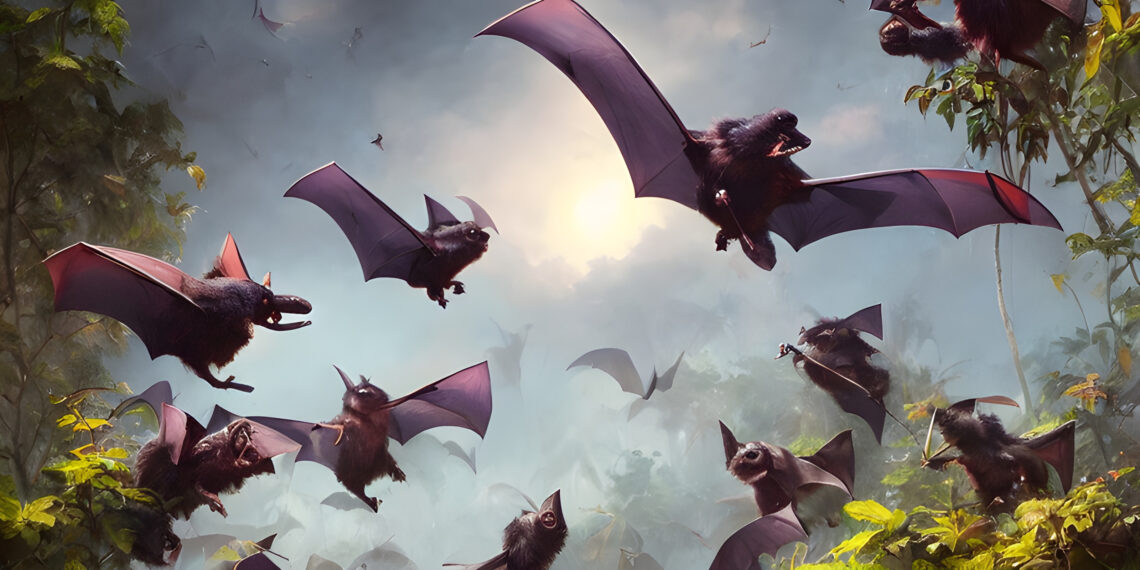The myth that bats are blind has been debunked through various scientific studies and observations. While these fascinating creatures rely on echolocation to navigate and locate prey, they also possess functional eyes and can see. Bats have adapted to their nocturnal lifestyles by developing superior night vision and integrating echolocation and vision to navigate their environment with remarkable precision. So the next time one hears someone say, “blind as a bat,” remember that these intriguing creatures are far from sightless and possess unique sensory abilities that make them perfectly adapted to their nocturnal world
Bats are blind myth

Bats have often been the subject of various myths and misconceptions. One popular claim is that bats are blind, but is there any truth to this notion? In this article, we dive into the world of bats and explore how these flying mammals perceive their environment.
The Claim: Bats Are Blind
The claim that bats are blind has persisted in popular culture for quite some time. It even led to the well-known expression “blind as a bat,” which is slang to describe someone with poor vision. However, is there any truth that bats are blind?
The Truth: Bats Are Not Blind
Bats are not blind. While they rely heavily on echolocation to navigate and find food, they also have functional eyes and can see (Benedek et al., 2017). Echolocation describes a bat’s ability to emit high-pitched sounds and listen to the returning echoes. This determines objects’ location, size, and shape in their environment (Neuweiler, 2000). However, this does not mean that bats are devoid of vision altogether.
Bats’ Visual Capabilities
Bats possess a range of visual capabilities, depending on the species. Microbats, which are smaller and primarily insectivorous, typically have smaller eyes and rely more heavily on echolocation. Microbats can still see and use their vision to complement their echolocation abilities (Fenton, 1990). On the other hand, fruit-eating bats, also known as megabats or flying foxes, have larger eyes and rely more on vision to find food and navigate (Melin et al., 2014).
Research has shown that bats have evolved into seeing in low-light conditions, making their night vision far superior to humans (Warrant, 2011). The retinas of many bat species contain a high density of rod cells, which are sensitive to low levels of light and enable them to see well in the dark (Warrant & Dacke, 2011). This adaptation allows bats to make the most of their nocturnal lifestyles, easily avoiding predators and locating prey.
Intriguing Adaptations: Echolocation and Vision Working Together
While bats are not blind, their reliance on echolocation does make them unique among mammals. This ability allows bats to navigate and hunt in complete darkness (Jones & Teeling, 2006). Some species of bats have even developed specialized facial features, such as large noses or elongated ears, to improve their echolocation abilities (Simmons, 2005).
Recent studies have also revealed that bats can integrate information from both echolocation and vision, using these sensory modalities in a complementary manner (Geipel et al., 2013). For example, some bats use echolocation to detect nearby obstacles and then rely on their vision to fine-tune their flight paths (Moss et al., 2006). This combination of sensory information allows bats to navigate their environment with incredible accuracy and efficiency.
Benedek, G., Horváth, G., & Pereszlényi, Á. (2017). Bats are able to maintain long-lasting flight in complete darkness using their vision. Journal of Comparative Physiology A, 203(11), 881-891.
Fenton, M. B. (1990). The foraging behavior and ecology of animal-eating bats. Canadian Journal of Zoology, 68(3), 411-422.
Geipel, I., Jung, K., & Kalko, E. K. (2013). Perception of silent and motionless prey on vegetation by echolocation in the gleaning bat Micronycteris microtis. Proceedings of the Royal Society B: Biological Sciences, 280(1754), 20122830.
Jones, G., & Teeling, E. C. (2006). The evolution of echolocation in bats. Trends in Ecology & Evolution, 21(3), 149-156.
Melin, A. D., Danosi, C. F., McCracken, G. F., & Dominy, N. J. (2014). Dichromatic vision in a fruit bat with diurnal proclivities: the Samoan flying fox (Pteropus samoensis). Journal of Comparative Physiology A, 200(12), 1015-1022.
Moss, C. F., Bohn, K., Gilkenson, H., & Surlykke, A. (2006). Active listening for spatial orientation in a complex auditory scene. PLoS Biology, 4(4), e79.
Neuweiler, G. (2000). The Biology of Bats. Oxford University Press.
Simmons, N. B. (2005). Order Chiroptera. In D. E. Wilson & D. M. Reeder (Eds.), Mammal Species of the World: A Taxonomic and Geographic Reference (3rd ed., pp. 312-529). Johns Hopkins University Press.
Warrant, E. (2011). Nocturnal vision. In E. J. Warrant & D. E. Nilsson (Eds.), Invertebrate Vision (pp. 53-86). Cambridge University Press.
Warrant, E. J., & Dacke, M. (2011). Vision and visual navigation in nocturnal insects. Annual Review of Entomology, 56, 239-254.
